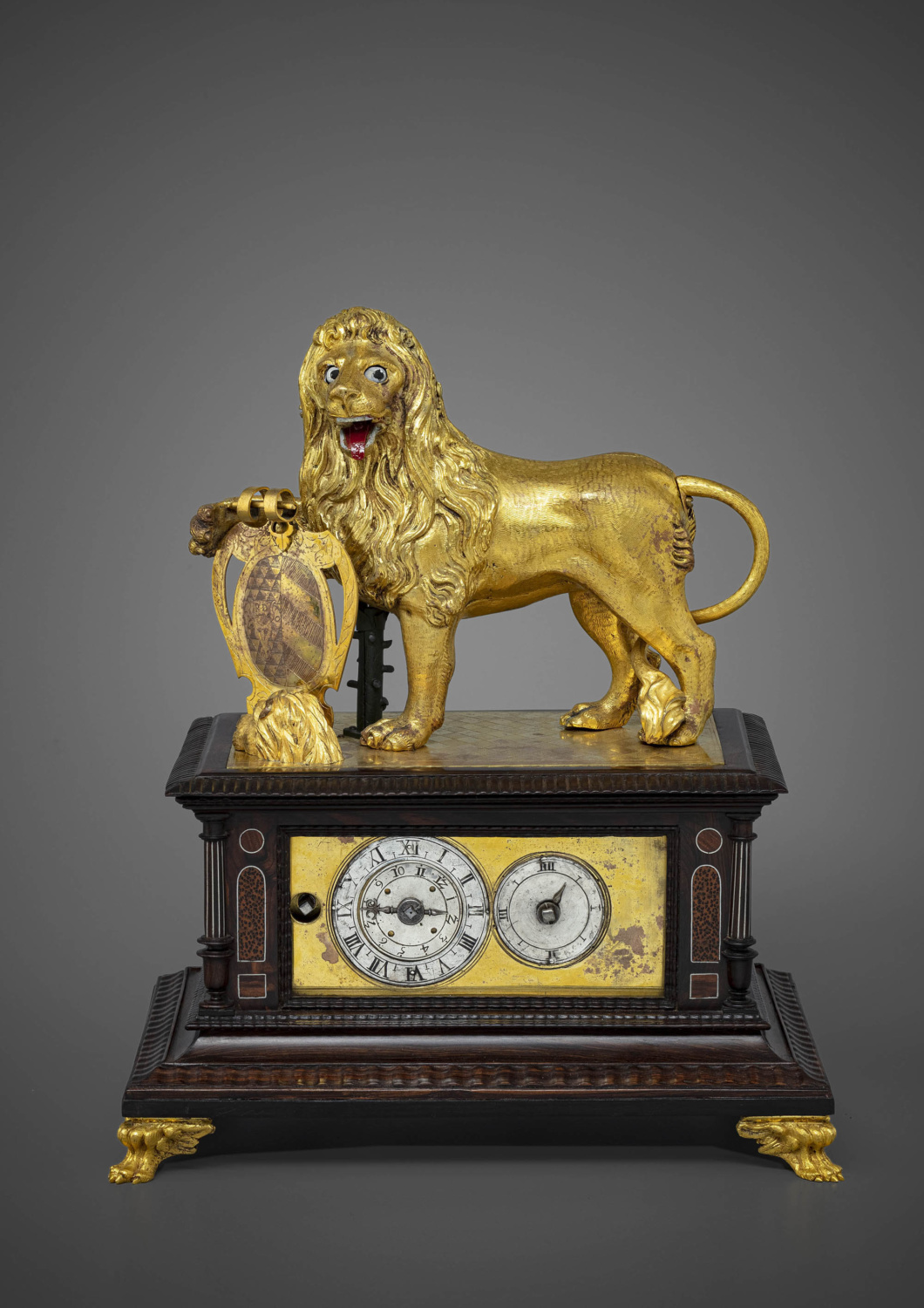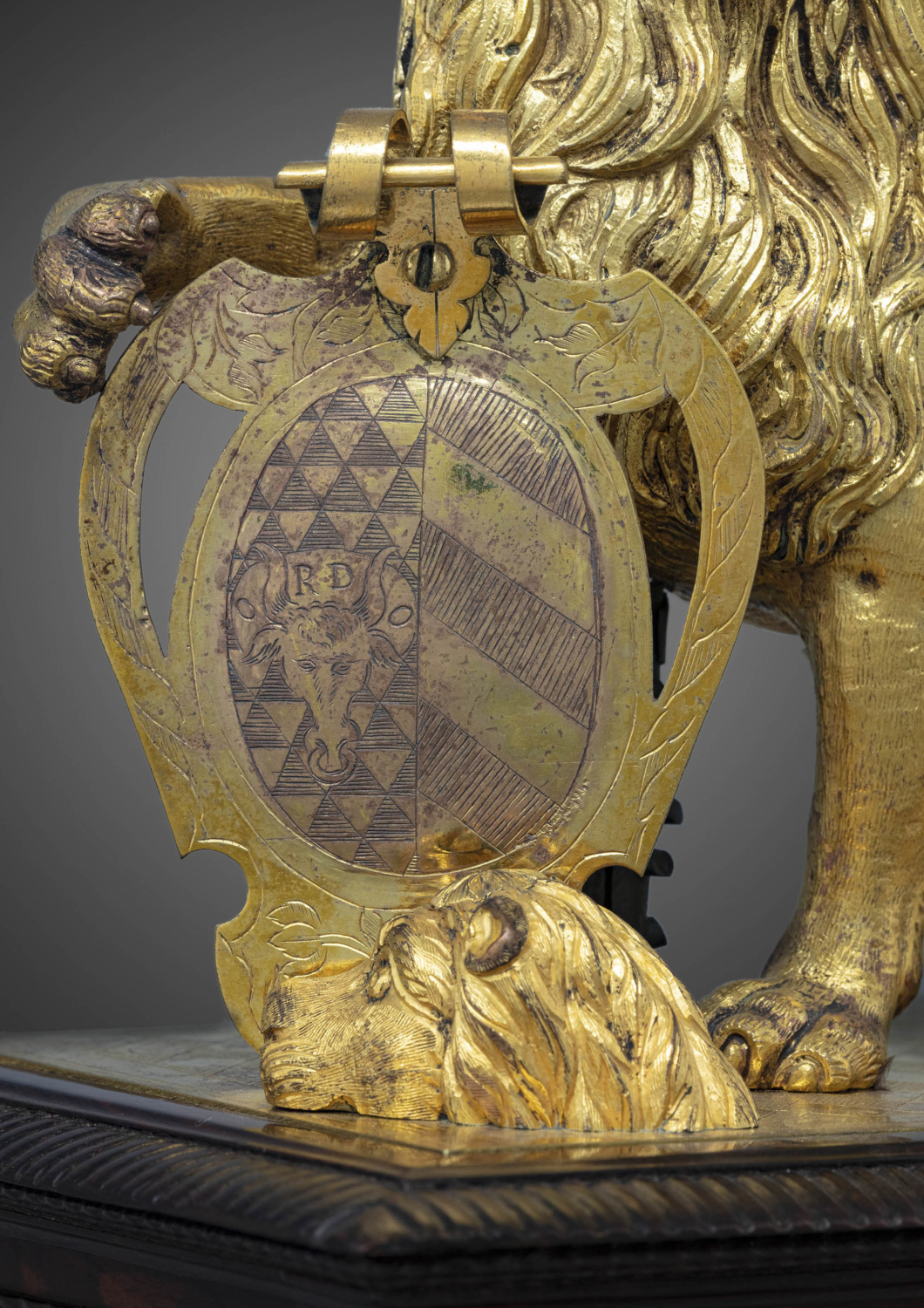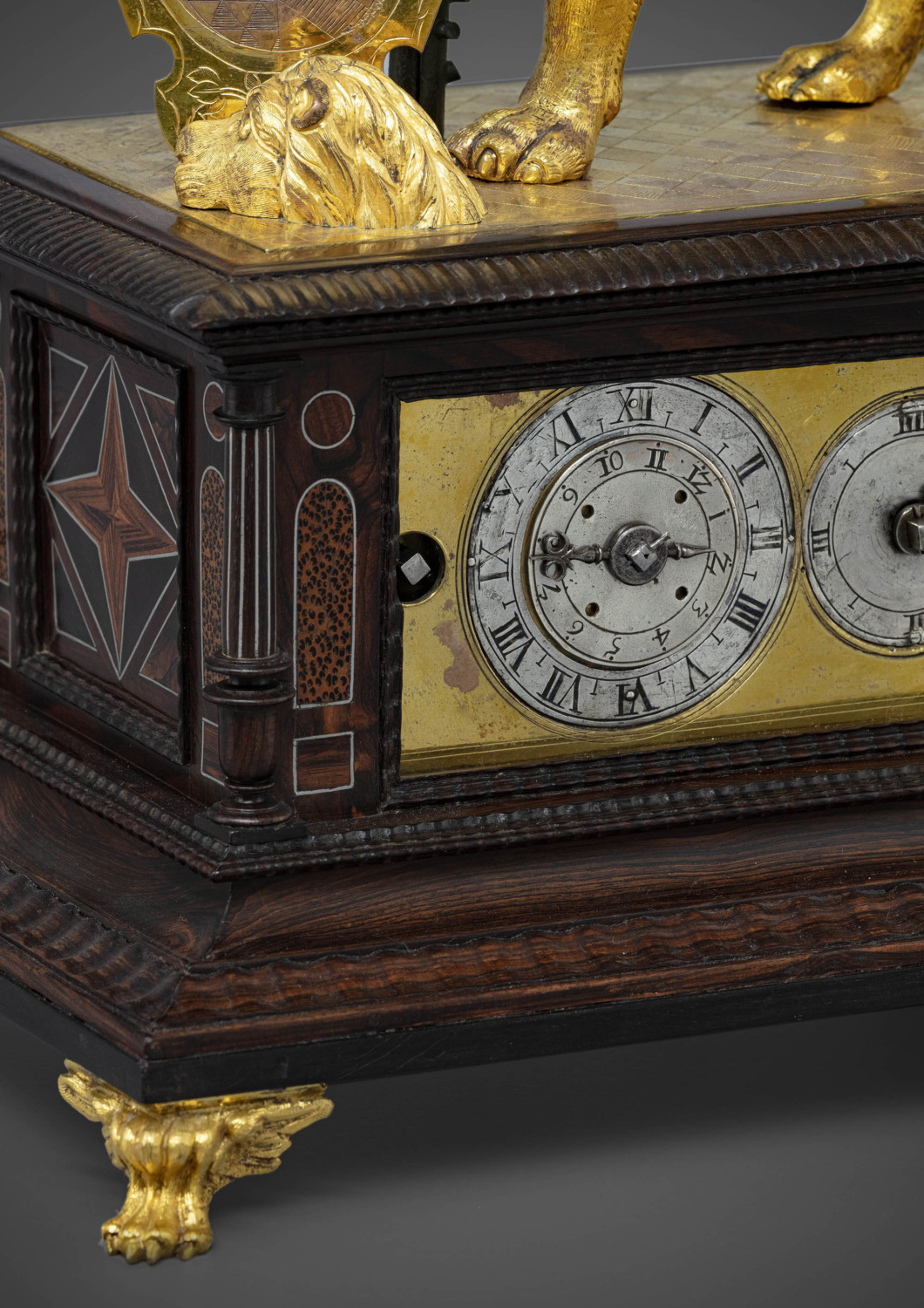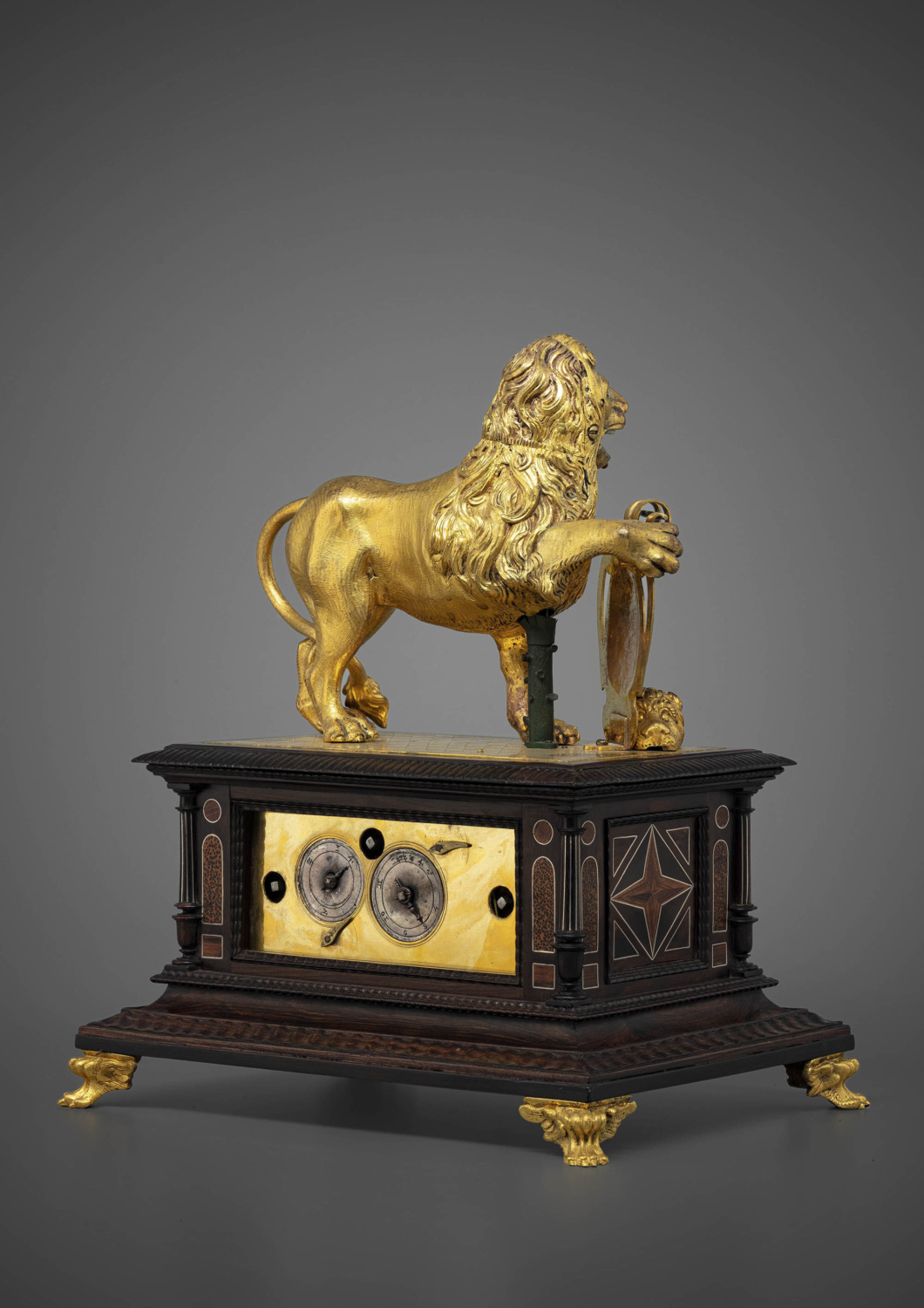Automaton clock in the form of a pacing lion
Base attributed to Ulrich Baumgartner
Augsburg, circa 1620‑1630
Details
Gilded bronze, silver, kingwood, palm wood, pewter
H. 11 ⅝ in.; L. 10 ¼ in.; D. 7 ¾ in.
Provenance
Courtenay Adrian Ilbert (1888‑1956)
Michael Inchbald, London (1920‑2013)
Literature
Kugel (Alexis), A mechanical bestiary, Paris, 2016, cat. 20, pp. 150‑153, ill.
Cabinets de curiosité, cat. ex. Fonds Hélène et Edouard Leclerc pour la culture, Capucins, Landernau, 23 June‑3 November 2019, pp. 67 and 70, ill. p. 67
Exhibitions
2019, Landernau, Cabinets de curiosité, Fonds Hélène et Edouard Leclerc pour la culture, Capucins
Automaton clock in the form of a pacing lion
Base attributed to Ulrich Baumgartner
Augsburg, circa 1620‑1630


From the time of Homer to our digital era, mankind has pursued the dream of giving life to an artificial being. At the end of the Middle Ages, the development of horology allowed the creation of the first automata, at the crossroads between science and art. During the Renaissance, this dream took the form of luxurious clocks representing animals and humans, destined for the pleasure of princes.
One of the most unusual features of the present clock is the exceptional quality of its wooden base. The unusual marquetry, the use of palm wood, an exotic and precious wood, and the graceful architectural construction are characteristic of the style of the most talented Augsburg cabinetmaker, or Kistler, of the time – Ulrich Baumgartner (1580–1652). For Philipp Hainhofer he made the renowned Kunstschranken, or treasure cabinets and seems to have been the first to use palm wood framed by metal inlays. This feature may be seen in the Kunstschrank in the Getty Museum in Los Angeles, which is also attributed to Ulrich Baumgartner.

